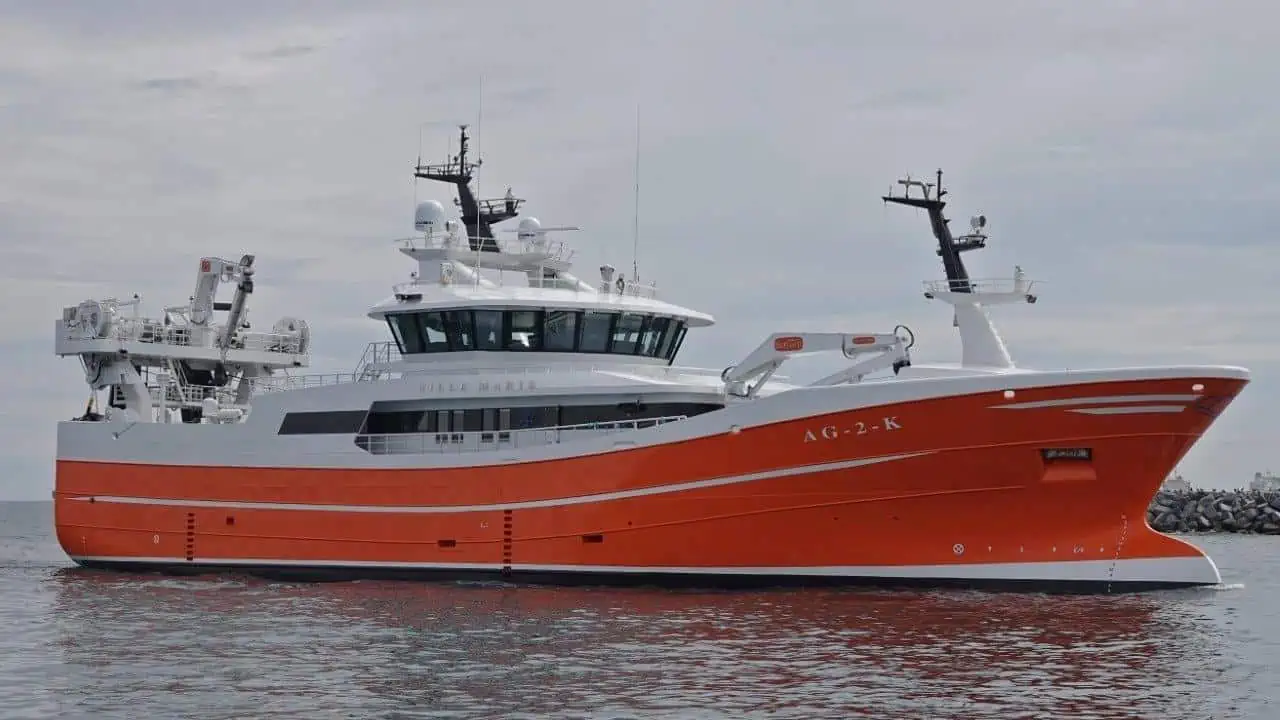The christening of new pelagic trawler Sille Marie is taking place today (12th August) at the quayside in Kristiansand, the new vessel having been delivered to fishing company Sille Marie AS by Karstensens Skibsværft.
The new Sille Marie replaces an older pelagic vessel that was acquired in 2015 from Sweden – and which has since been sold and is back with new Swedish owners.
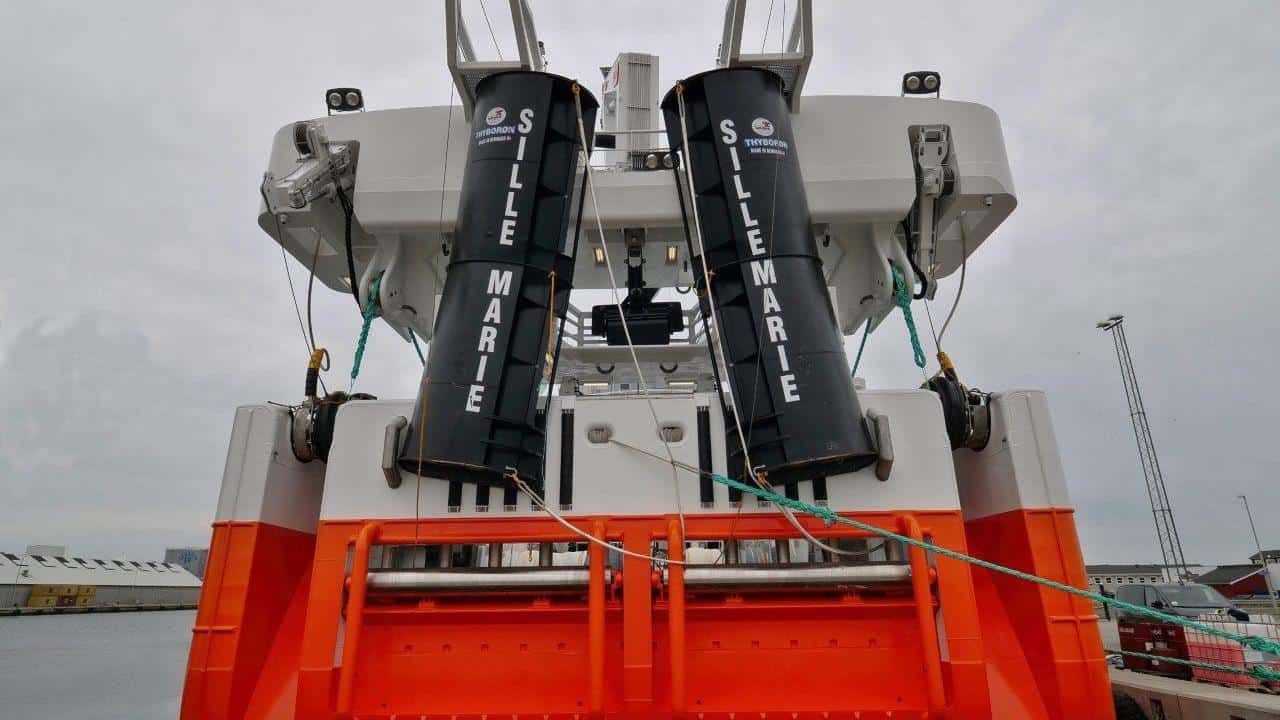
Owned by Carl Aamodt and the Salthuag family from Søgne, Sille Marie AS was established in 2015 to fish for mackerel and herring as conventional pelagic species to be landed for human consumption, as well as some industrial species and with options to target whitefish. The company is managed by Carl Aamodt, in co-operation with skipper Bastian Salthaug, Yngvar Salthaug and chief engineer Tobias Salthaug.
The Karstensen yard has an established relationship with Carl Aamodt and they have collaborated in the past on other vesesls, but Sille Marie AS is a relatively new customer and the relationship between company and yard began with repair and maintenance work on the previous Sille Marie, which was followed by an order for the new 65.90 metre, 14 metre breadth, 1726 cubic metre capacity RSW vessel placed in July 2021.
Like virtually all of the fishing vessels delivered by Karstensen in recent years, Sille Marie is built to the yard’s own design, with the focus on efficient operation and keeping fuel consumption – and consequently emissions – to a minimum. A great deal of effort went into fine-tuning the hull design and integrating this with a large-diameter, slow-running propeller, in collaboration with engine supplier MAN.
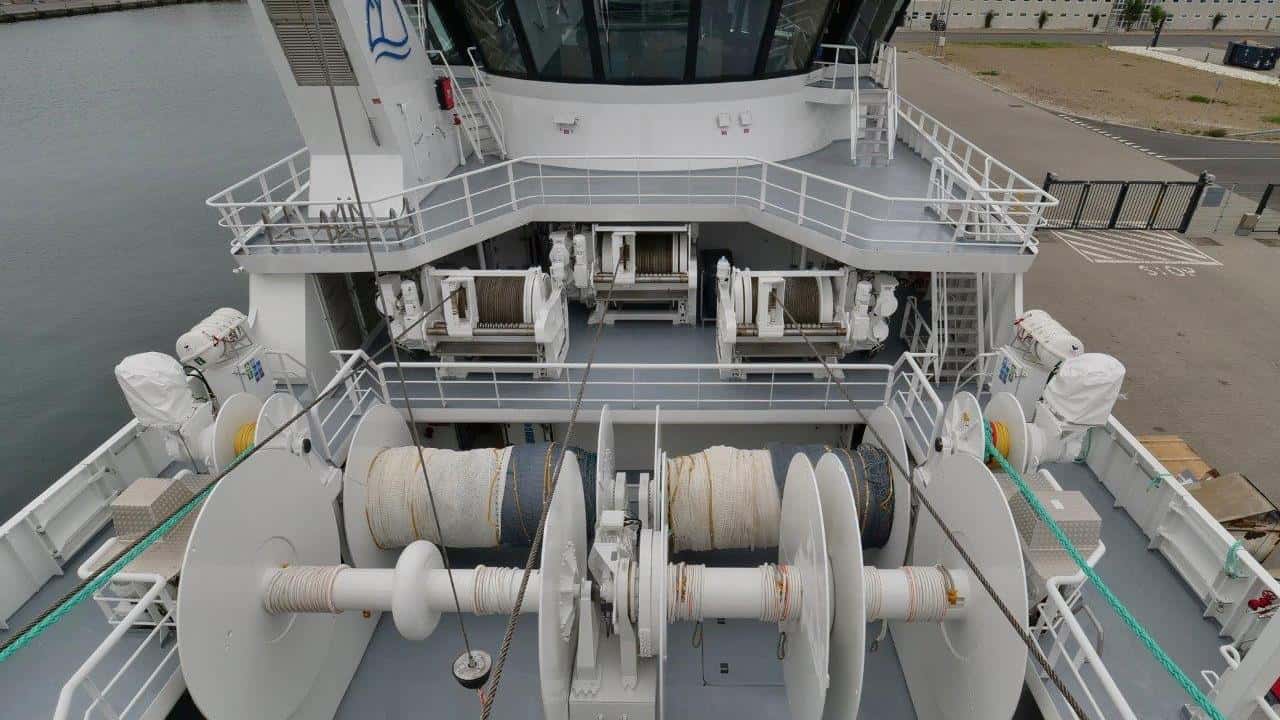
In addition, there’s a heavyweight 622kW/h battery pack, providing a full power supply for limited periods, as well as delivering peak shaving to streamline the overall energy consumption on board.
The main engine is a 2920kW MAN 8L27/38, driving a 4700mm MAN VBS860 propeller via a Renk RSVL-1120 reduction gear. A 1650kW/2250kVA AvK DSG 99 M1-6W shaft generator supplies electrical power, backed up by a pair of 556kWe Volvo Penta D16 auxiliaries. All this comes with a Power Management System (PMS) which manages energy consumption and automatic start-up of the diesel generators. A UPS/clean power for 230V is installed, so the ship’s frequency can flow between 50 and 60Hz. This allows for a 17% reduction in the main engine’s RPM.
Most of Sille Marie’s systems are electrical, including the fish pumps and the deck equipment, which routes energy to the battery pack when shooting away. In addition, there is heat recovery from all engines, LED lighting throughout and numerous other measures taken to optimise energy consumption.
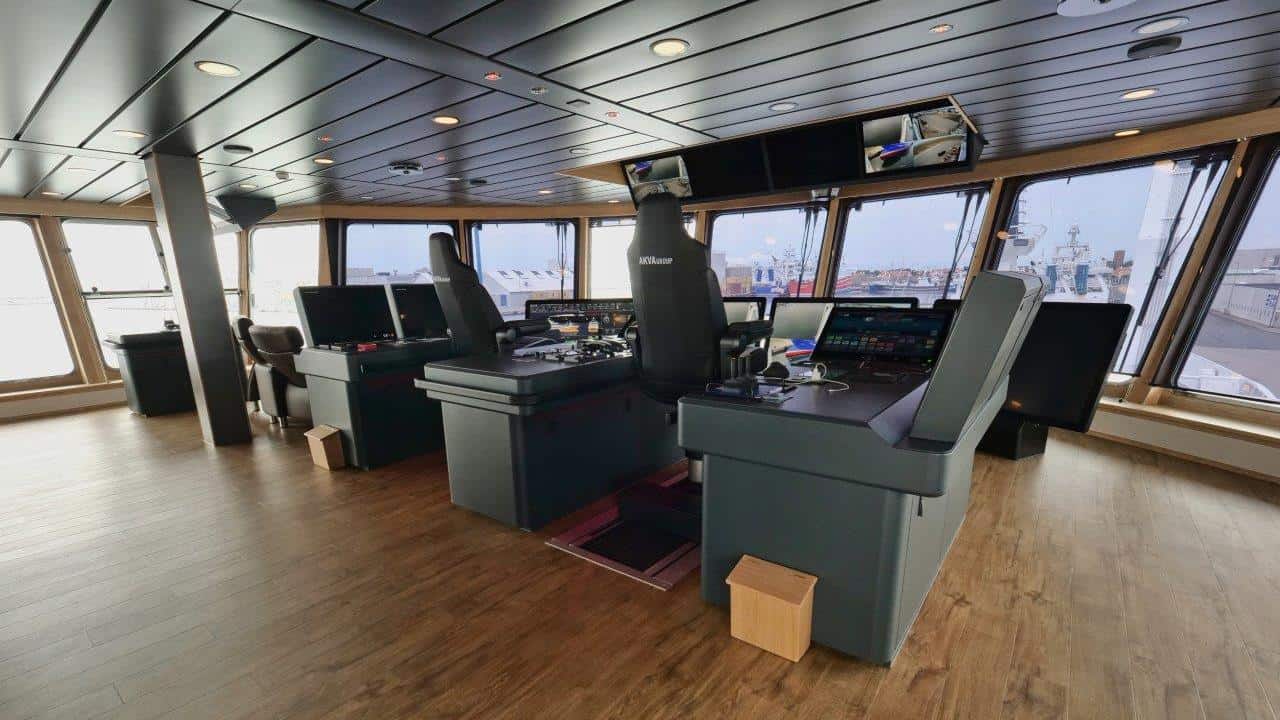
The FB-H 2330×4500 flap rudder and SR662 steering system are from Kongsberg, and the 700kW thrusters are FU-45-LTC-1550 units from Brunvoll.
MacGregor Rapp Marine supplied the full electric deck layout with three 60-tonne trawl winches and a pair of 80-tonne net drums, plus a 2×30-tonne double net drum and a single 60-tonne net drum, all aligned to the hydraulic gates at the stern, each of which is outfitted with hydraulic control rods. A pair of net sounder winches is mounted on the aft gantry, which is also topped by the SeaQuest net crane, providing an arc of access across the aft working deck.
The two 24-inch fish pumps and associated cable drums and hose reels are also from MacGregor Rapp Marine, and Sille Marie can pump catches from either quarter, with catches routed to the selected tanks which are chilled by a twin PTG FrioNordica, 870kW system with a 2 x 748,000kCal/h capacity. The vacuum system is from Önnereds Svets, and Sille Marie has a Kapp Optim-ice slurry ice system, and a whitefish processing area outfitted by BoaTech with a pair of KM Fish gutting machines.
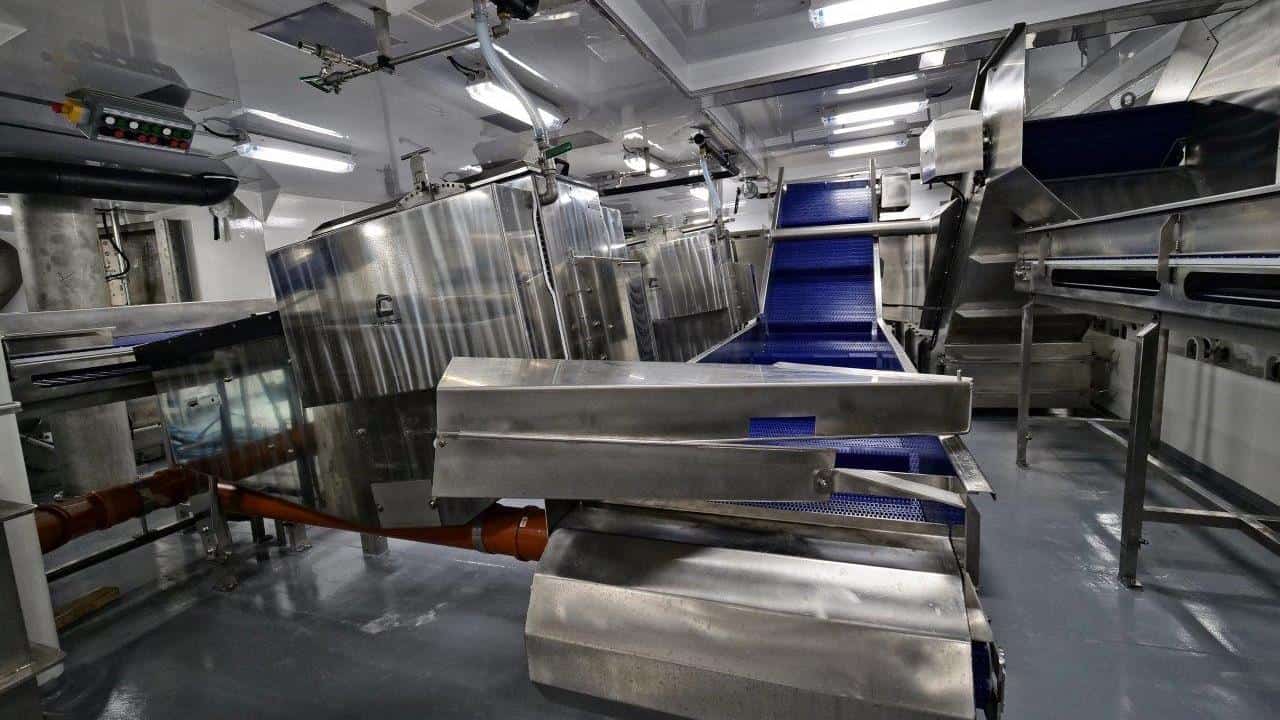
Accommodation on board Sille Marie is in a pair of engineer’s cabins at main deck level, where there are also laundry and fitness facilities. There are a further five two-berth ensuite cabins in the superstructure, as well as a sick bay and an oilskin store. Accommodation areas have been placed as far as practical from the propeller and other noise sources, plus there is some serious sound insulation that has gone into the cabins and other areas to keep them as quiet as possible. The crew’s day room, mess and galley are all located in the superstructure.

